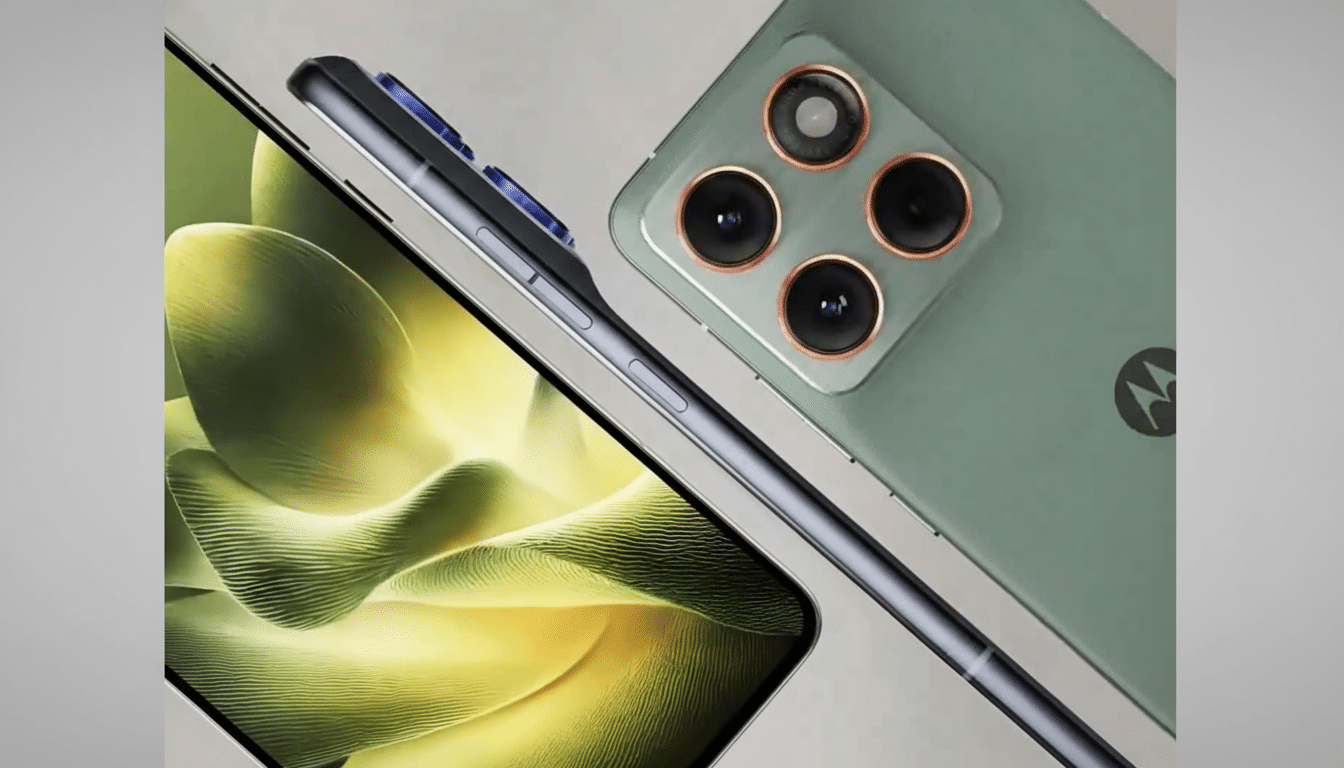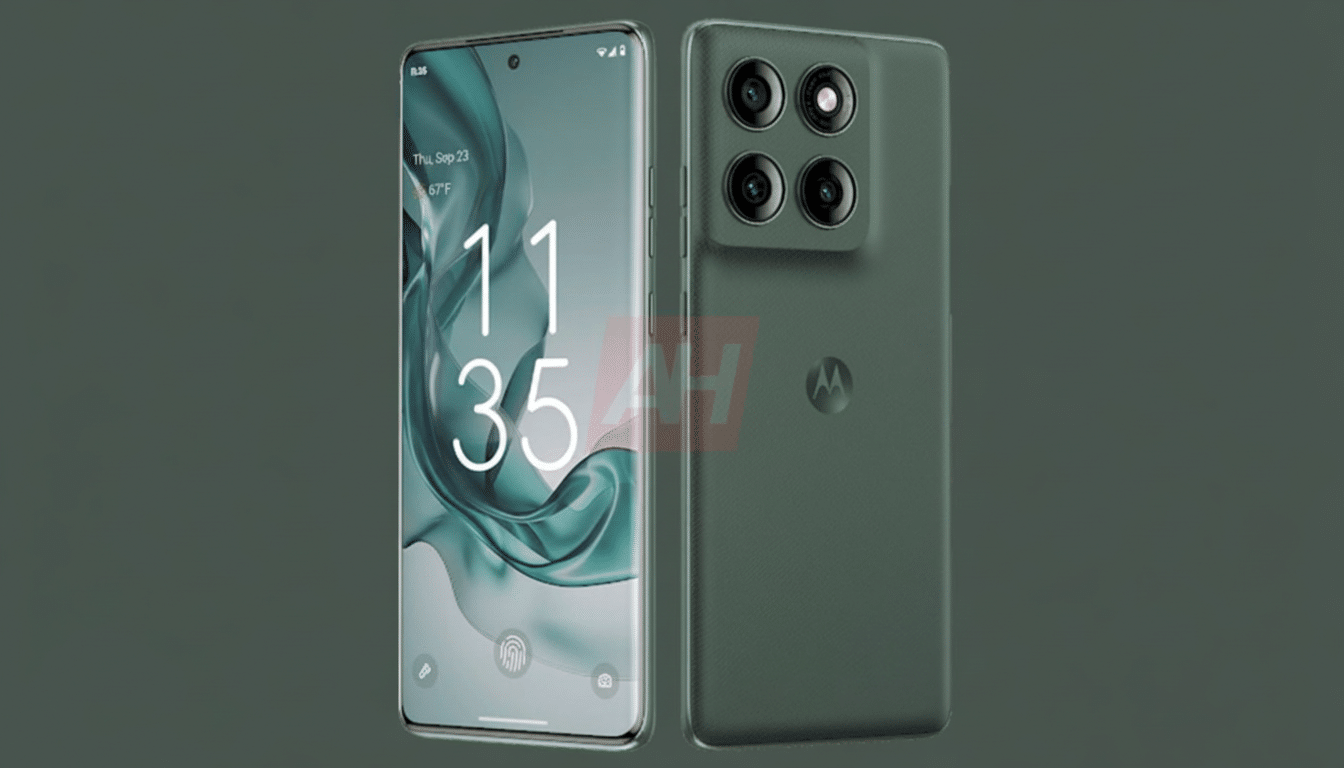A broad retail leak may have just pulled the curtain back on Motorola’s next featherweight flagship, one that will put it squarely at odds with a rumored Galaxy S25 Edge. A listing on a Polish e-commerce site, spotted by GSMArena, details the design, key specs and colorways for a device set to make an appearance in China as the Edge 70 Air before hitting the global market as just ‘Edge 70’. Motorola, of course, has already teased its thin-and-light plans, but this leak paints a much clearer picture.
Retail listing reveals design, specs, and color options
The retailer page, now listed as sold out, lists a 6.67-inch 1.5K OLED panel with a 120Hz refresh rate and a 50MP in-display camera, accompanied by two more around the back.
- Retail listing reveals design, specs, and color options
- Slim Chassis, Bigger Battery, Bolder Bump
- Display And Camera Options Center On Practical Premium
- Chipset and software strategy prioritizes efficiency
- The thin phone race heats up across 2025 flagships
- Early verdict and what to watch before the official launch

Oddly, promotional images appear to show three lenses with product separators — so either it’s a third decorative ring (which we doubt), or Motorola has a sensor array that doesn’t map 1:1 with your average triple-camera arrangement. Storage supposedly tops out at 512GB, and the phone is rumored to launch with Android 16.
Slim Chassis, Bigger Battery, Bolder Bump
At 6mm thick and 170g slung, we’re straight into razor-thin but not featherweight territory with this particular device. It may be tactical restraint: the other party piece is said by listing to have a 4,800mAh battery crammed in there, which dwarfs what many wafer-thin models get. The other side is a camera island that, in images at least, protrudes clearly and near as tall as the chassis — emphasizing an all-too-common trade-off in the thin phone playbook: slimmer core, chunkier optics.
Only 15W of wireless charging support is rumored, and there’s no indication about Qi2. That detail matters. The Qi2 spec cooked up by the Wireless Power Consortium, starting to get implemented in 2024–2025 flagships everywhere, figures that out by doing away with magnetic alignment and preparing for an experience where charging speed is far more predictable. Motorola would leave some differentiation on the table if it skips Qi2 at launch — and this only helps widen the gap between its rivals, which are fusing together all their accessories and charging reliability through the new standard.
Display And Camera Options Center On Practical Premium
Said 1.5K resolution — generally about 1220p — falls in between Full HD+ and QHD+, that sweet spot between sharpness and power draw you’ll find many a brand targeting right now. A 120Hz refresh rate ought to keep scrolling smooth and gaming responsive, and it’s in line with what shoppers want at the upper midrange. There were no listed brightness figures, but similar panels in this class of product often peak north of 1,200–1,600 nits; any weakness here would be reflected in outdoor visibility.
On imaging duty, two 50MP rear sensors hint at a wide and an ultra-wide recipe unless digital zoom does the duty until an unfocused telephoto spills into view. The 50MP selfie camera is an ambitious spec for social-first purchasers and short-form content creators. In the real world, the performance will likely come down to sensor size, lens quality and Motorola’s computational imaging; we’ve seen from recent mid-rangers that smart tuning often counts for more than just megapixels.
Chipset and software strategy prioritizes efficiency
The listing mentions the Snapdragon 7 Gen 4 from Qualcomm, which suggests a focus on efficiency-first performance over bleeding-edge speeds. Anticipate a slick day-to-day experience and respectable gaming at medium settings, not the blunt-force frame rates of a top-tier Snapdragon 8 series handset. With 12GB of RAM to start and up to 512GB of storage, Motorola looks like it wants to provide a “no-compromise” level memory and capacity experience that users love and crave.

Longevity of the software will be a critical question. Buyers are putting as much weight on update guarantees as they are on camera specs. According to research from Counterpoint, premium and premium-adjacent phones now make up about a quarter of global smartphone volumes, and those buyers want multi-year OS and security support. Speaking of which, we don’t see Motorola’s stance for this model reiterated in leaks; just hoping it will be clear at launch to take an edge off fence-sitters.
The thin phone race heats up across 2025 flagships
Motorola’s push for thin and light comes as the industry pivots back toward comfort and pocketability. Whispers of an ultra-skinny iPhone variant — and rumors about the ultra-thin Galaxy S25 Edge — have brought the form-factor finesse back, after a period where camera islands and phablet-packing batteries have ruled. The problem is physics: slimmer frames make it more difficult to dissipate heat, cram in a battery and incorporate optical stabilization. Brands that thread the needle often win accolades in durability tests and long-run battery assessments such as those conducted by DxOMark.
Against that canvas, a 6mm chassis combined with a 4,800mAh cell sounds ambitious. Assuming Motorola’s thermal design doesn’t hang the Snapdragon 7 Gen 4 out to dry under sustained loads, and assuming charging speeds hold up in independent testing, this phone could establish a practical template for thin flagships that don’t collapse under real-world pressure.
Early verdict and what to watch before the official launch
Great on paper, the Edge 70, conceptually at least: premium feel, grown-up endurance and not-quibble-over mainstream-fast display are excellent in any phone … and that camera stack is all about doing right by you rather than thrilling social-media fans.
Pricing will be critical. If Motorola comes up below “halo device” average this time but also promises competitive software support, it’s a damn-fine spoiler for any thin-to-win Galaxy or iPhone this cycle.
The retail leak leaves some blanks — final camera configuration, confirmed charging standards and regional naming are the main three — but it does set expectations. It looks as though Motorola is ready to take on the thin, tiny (not literally) elite not by playing their game of chasing the absolute lightest spec sheet, but weighing silhouette against substance. It might be the smarter way to win, the pocket war.

